Existing Autistically in a Neurotypical World
“It’s today!” I whispered excitedly waking up for my 27th year around the sun, a phrase I had said every morning on my birthday since I was 3-years-old. What most people don’t know is that this phrase was from a particular children’s television show called ‘Brambly Hedge’ and I had not relented in my little self-tradition on my birthday mornings no matter how embarrassing I knew it was. What most people don’t know when they meet me is that I am an autistic and ADHD woman (known as ‘AuDHD’). These little traditions and repetitive things I do bring me a sense of comfort in a world not designed for my brain.
I have always been an AuDHDer – I just didn’t know it until I was 26-years-old when my mental health issues, as a secondary factor of my AuDHD not fitting the mould, came to a peak and I needed to find out why. This curiosity coupled with my struggles to adapt to a world I didn’t inherently understand drove me to studying psychology and social anthropology to try to understand the world even before I knew I was AuDHD.
Down the Rabbit Hole of Secondary Diagnoses
I experienced clinical anxiety and depression, especially throughout my late childhood to teenage years. I was sent to multiple mental health services and nothing felt like it was the right fit. I was told I was ‘too self-aware’ and in reality, the front-line CBT they kept repeatedly trying was not working and made me feel more broken. It wasn’t until my AuDHD diagnosis that I finally found out the underlying cause of these secondary diagnoses and why I had ‘treatment resistant’ depression. Unfortunately, this story is not too uncommon among late-diagnosed neurodivergent people. I wish I had been able to access a neuroaffirming assessment earlier in my life that was affordable and accessible but these simply weren’t available (and largely still aren’t). Since my diagnoses and accessing neuroaffirming care, my mental health has improved greatly. This sparked my passion to help other neurodivergent children and families find the right service for them and lessen the chances of them developing mental health concerns like I did.
A Service Drought, A Missing Demographic and Unmet Need
I now work as a Family Mental Health Practitioner in one of the lower socioeconomic urban areas in QLD. I stumbled into a niche untapped need in this area of so many struggling undiagnosed neurodivergent children and their families unable to access assessment, diagnosis and the neuroaffirming support they desperately needed. When these children were assigned to work with me, my aim was to provide the support that, I, and many others like me, didn’t receive when we were younger.
What I discovered was that a large portion of the children I worked with showed strong signs of either Autism, ADHD or AuDHD (and other neurodivergence) and were undiagnosed. As an AuDHD person and practitioner myself, this was just not good enough. Many of these children were labelled as ‘naughty’ or ‘just traumatised’.
I spent a large amount of time educating parents, educators and mental health professionals alike about the differences and similarities of trauma and neurodivergence in a world that is not designed with neurodivergence in mind. A world where existing as a deviation from the norm is inherently traumatic. Professionals who saw these children were so eager to put them into a neat ‘box’ of either trauma or neurodivergence. In addition, so many girls in particular were missed as they would mask their neurodivergence so well that the 15 minute paediatric consult was not enough to tell their full story. I challenged people to think more holistically and consider that it can be (and often will be) both factors plus so many more that make up that child’s experience.
A fresh Practice Idea Born from a Merging of Two Worlds
I worked hard to create my own frameworks (such as ‘The Neuroaffirming Hierarchy of Needs’) of effective and ethical practice when working with neurodivergent people to assist other mental health professionals as I found that these frameworks and resources didn’t yet exist in our community and health systems.
I researched and collated multiple existing robust lived-experience frameworks from the NHS in the UK and other corners of the world including indigenous storytelling practices from the indigenous peoples of Aotearoa New Zealand and Australia. I pitched the idea to my supervisors who were somewhat hesitant but grew to be very supportive of this approach as I began to navigate less ventured waters in mental health practice. I carefully balanced the traditional (and neuroaffirming) approaches alongside careful use of my own lived-experience.
Navigating Neurodiversity in Practice
I provided the families with intensive neuroaffirming psychoeducation and practical home strategies to help them support their neurodivergent children and adapted this approach for their schools too. Alongside working on emotional regulation techniques for these children, I provided ‘assessment packs’ of everything a family might need to know about supporting a neurodivergent child. These packs also included information on how to find a neuroaffirming practitioner for assessment alongside peer reviewed articles and screener questionnaires so the family would be taken seriously – especially for those whose children presented differently to the stereotypical autistic or ADHD child.
As a result, I saw a large increase in: positive identity building, neuroaffirming self-talk and general improvements in almost all domains of the children’s lives and increase communication and understanding amongst the family in general.
These families who felt ignored and who had been dismissed by multiple medical professionals were finally heard. Some wanted to engage with social and health systems again after being told time and time again that their child will ‘grow out of it’. I encouraged them to seek support from neuroaffirming practitioners and avoid behaviourist practices such as Applied Behaviour Analysis (ABA) and Positive Behaviour Support (PBS) that often go against neuroaffirming practices and remove agency from the person they’re meant to help.
We Need Meaningful Systemic Change for Our Neurodivergent Community
We need to examine the NDIS and how this provides assessments and services to those who cannot access them due to systemic barriers. The QLD Government has the Assessment and Referral Team (ART) to support this process to increase access to assessment, but this still leaves a large gap for those neurodivergent children who may present differently or aren’t considered to have ‘high enough’ support needs for the NDIS, but are still in need of support.
When we, as practitioners listen to the communities we serve and provide services they need, we can create meaningful change. Not only for the service users but for legislation and structural changes (NDIS/Medicare Criteria) towards neuroaffirming care.
Advice to Mental Health Professionals
- Learn about the neurodiversity paradigm in the social model of disability.
- Listen to neurodivergent voices as their own culture and community.
- Build your practice frameworks from a neuroaffirming perspective.
- Follow neurodivergent creators and professionals as experts in their own experience.
- Question your current understanding of what autism, ADHD, and neurodivergence looks like. Consider the intersectionality of other factors such as gender, age, culture or sexuality and how this may mean that neurodivergence may present differently to what you’d expect.
Some Great Resources and Organisations to Research and Follow
- Yellow Lady Bugs Australia (Women and Girls)
- Reframing Autism NSW
- Neuroffirming Hierarchy of Practice Model (Created by Georgia Scott)
- Australian Neurodiversity Affirming Health Professionals Facebook Group
- Unmasking Autism by Dr. Devon Price
- Dr. Tony Attwood & Michelle Garnett – Attwood & Garnett Events
Digital Tools
- Habitica (App) – Gamify your life. Make checklists and complete tasks to level up your character. Go on quests and customise your outfits, equipment, pets and more. You can even link in with a friend and go on quests together as you get your daily tasks done.
- The Miracle Modus – A calming app of repetitive shapes, patterns and lights. If traditional mindfulness and meditation is difficult for you, try focussing on this captivating app to meet your sensory needs.
- AI Apps – There are a variety of great apps being developed daily to help with school, university and daily life. Some can record lectures and take down notes for you. Others can adapt hard to read text into a dyslexic-friendly font. Google how AI can help you manage executive dysfunction.







